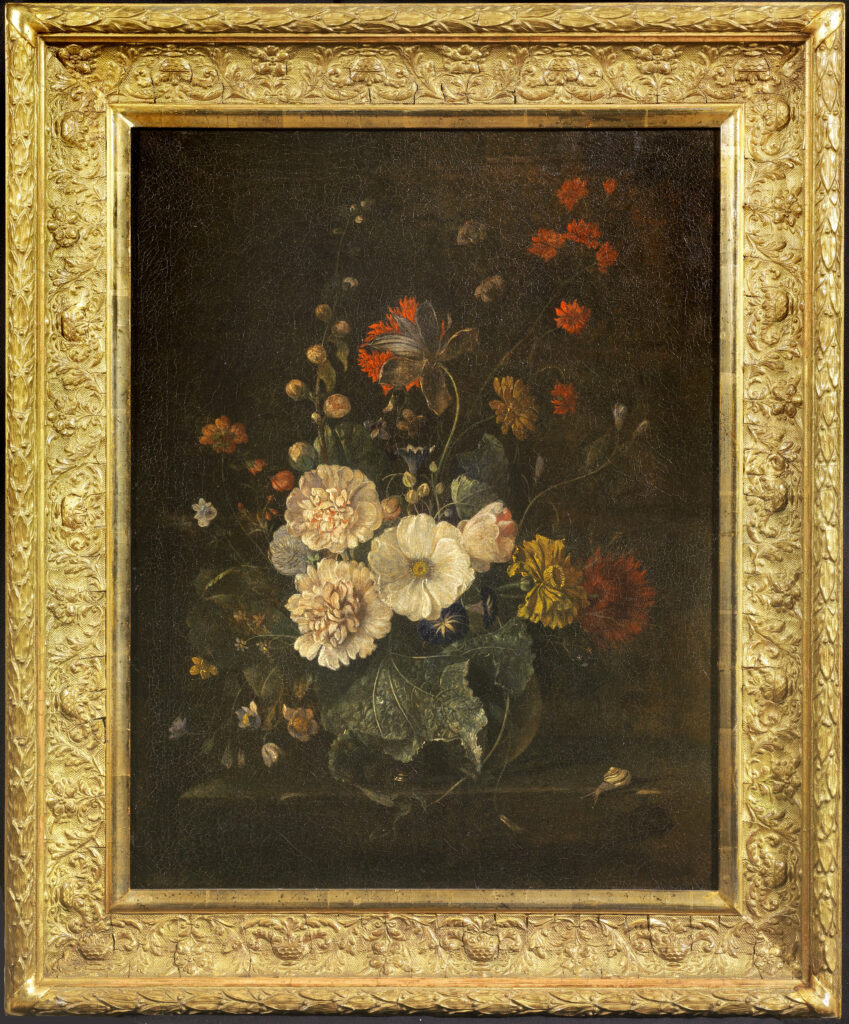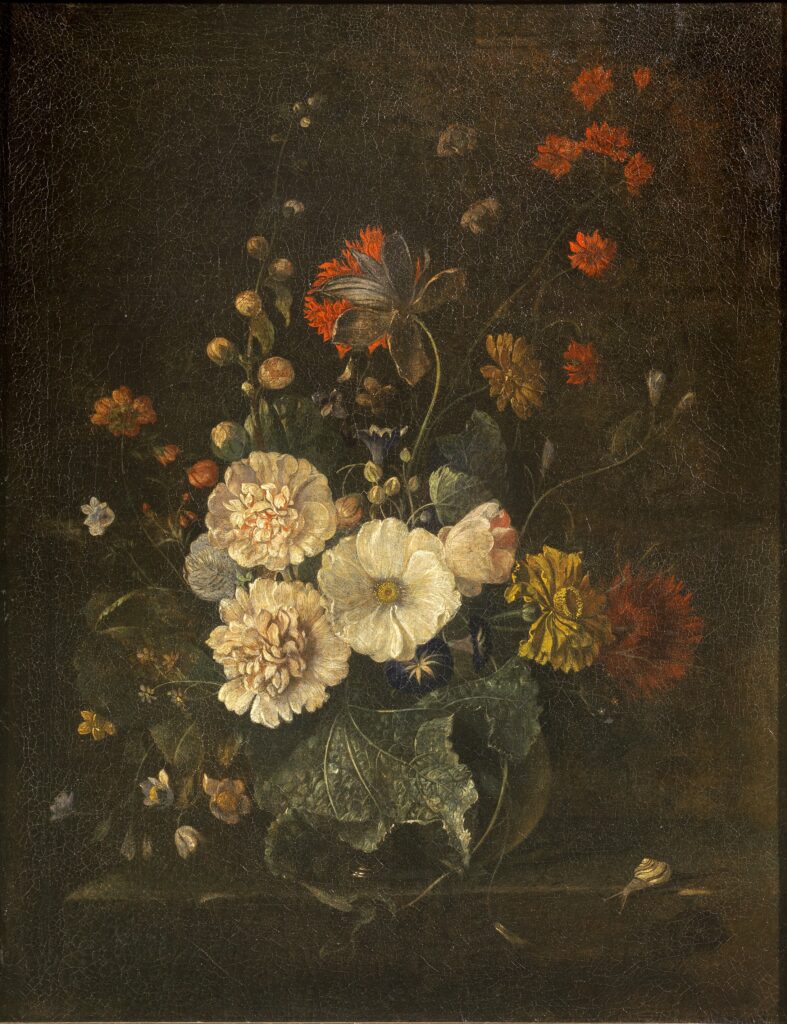RACHEL RUYSCH
The Hague, 1664 – Amsterdam, 1750
Still life with flowers and a snail
On two table tops in stone, of austere simplicity, we find two glass vases, in fascinating contrast, with colorful flower composition, that create a very scenic effect. The elegance and preciousness of the flowers combine with the markedly decorative effects of the vegetal parts, with stalks that bend, twist and curve according to a studied graphic rhythm. Plays with transparency are also experimented – witness the long slender leaves visible behind the glass receptacle – and the work is given realism and three-dimensionality with skilled experience, for instance with the aid of the small snail that timidly ventures forth, an inclusion of a “live” element typical of the Flemish tradition.
This pair of still lives, that may be dated with certainty, on the basis of style elements, to between the second half of the 17th century and the first half of the following century, may be retraced, due to the manner in which the flowers are represented and the typical decorative play with stalks and stems – as the one featured by the painting with the small snail just above it – to the context of Dutch painting, and to the milieu of Amsterdam in particular. A number of famous interpreters of this specialty were active in this artistic center, including, among others, Cornelis Kick (1631-1681), Abraham de Lust (1650 c.- post 1659) and the famous female painter Rachel Ruysch. The latter authored numerous pieces of this kind, and had a large following, to which we may attribute the execution of this pendant.


